
Sciatica, a sharp, searing pain that originates from an irritated sciatic nerve, can be debilitating. This discomfort typically begins in the lower back and extends down into the legs. Fortunately, a range of home remedies can offer much-needed relief.
Unveiling the Agony: Sciatica Explained
Sciatica pain can disrupt your life, leaving you in agony. To help you manage the distressing symptoms of sciatica, we’ve compiled a list of effective home remedies in this article. Keep reading to discover natural solutions for relief.
what causes lower back pain in females
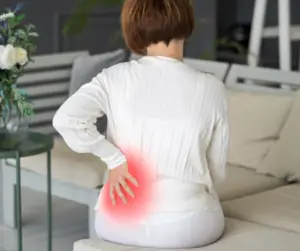
Lower back pain can be a challenging and discomforting issue, particularly for females. The causes behind this condition can vary widely, from muscle strains to reproductive health concerns or spinal issues. Understanding the potential triggers for lower back pain in women is crucial in addressing and managing this often disruptive discomfort.
Lower back pain in females can stem from various factors:
Muscle or Ligament Strain: Overstretching or tearing of muscles or ligaments in the back due to sudden movements, heavy lifting, or poor posture.
Reproductive Health Issues: Menstrual cramps, endometriosis, ovarian cysts, or uterine fibroids can cause referred pain to the lower back.
Pregnancy: The additional weight and changes in posture during pregnancy can strain the lower back, leading to discomfort.
Spinal Problems: Herniated discs, sciatica, spinal stenosis, or other structural issues within the spine can cause persistent lower back pain.
Infections or Inflammation: Urinary tract infections (UTIs), pelvic inflammatory disease (PID), or other infections affecting the reproductive or urinary organs can lead to back pain.
Overuse or Repetitive Stress: Continuous sitting, standing, or specific activities that strain the back muscles can contribute to pain.
Psychological Factors: Stress, anxiety, or depression can manifest physically and contribute to back pain.
According to the Centers for Disease Control and Prevention (CDC), back pain affected 39% of adults, with 36.5% experiencing lower limb pain and 30.7% reporting upper limb pain in the last three months of 2019. Additionally, it was observed that women (40.6%) were more prone to experiencing back pain than men (37.2%).
Exploring Sciatica Triggers and Risk Factors
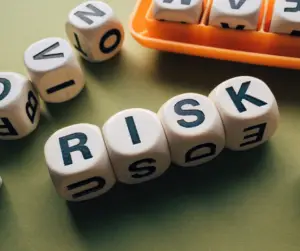
Several factors can trigger sciatica, and numerous risk factors can increase the likelihood of its development:
- Smoking
- Obesity
- Genetic predisposition
- Vitamin B12 deficiency
- Leading a sedentary, inactive lifestyle
- Poor ergonomic work conditions
- Depression
Certain occupational hazards, such as those faced by carpenters, truck drivers, and machine operators
It’s crucial to note that the presence of these risk factors alone does not guarantee the development of sciatica. An individual’s age and overall health also play significant roles in this regard.
Pro Tip:
The symptoms of sciatica can vary depending on the affected nerve root. For instance, the S1 nerve root may manifest as pain in your thighs and legs, while the L5 nerve root could lead to foot weakness.
home remedies for sciatica
If you’re grappling with sciatica, you’re not alone. This excruciating condition, stemming from irritation of the sciatic nerve, often initiates in the lower back and radiates down the legs. Here, we explore home remedies that can help manage the discomfort of sciatica.
Garlic Milk

Garlic, known for its anti-inflammatory properties, may alleviate inflammation and pain associated with sciatica.
Ingredients:
8-10 cloves of garlic
300 mL of milk
1 cup of water
Instructions:
Crush the garlic cloves.
In a saucepan, combine milk, water, and crushed garlic. Bring the mixture to a boil.
Let it simmer and cool for a while.
Consume the warm mixture, optionally adding a few drops of honey for taste.
Frequency: Twice a day.
Hot or Cold Compress

Hot and cold compress therapy can significantly reduce inflammation and sciatica-related pain.
Ingredients:
A washcloth
A bowl of ice-cold water or ice cubes
Warm water
Instructions:
Soak a clean washcloth in either warm or cold water, depending on whether you want a hot or cold compress.
Wring out excess water and place it on the painful area.
Repeat every 5-6 minutes.
Frequency: 3-4 times daily.
Ginger Essential Oil
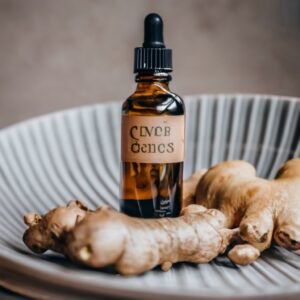
Ginger essential oil, rich in [6]-gingerol, exhibits analgesic and anti-inflammatory properties that may help alleviate lower back pain.
Ingredients:
A few drops of ginger essential oil
Carrier oil (e.g., olive oil)
Instructions:
Dilute ginger essential oil with a carrier oil.
Apply the blend to your lower back.
Frequency: Twice a day.

Peppermint oil, known for its analgesic and anti-inflammatory properties, may provide relief from sciatica pain.
Ingredients:
5-6 drops of peppermint oil
Carrier oil (e.g., sweet almond oil)
Instructions:
Dilute peppermint oil with a carrier oil.
Apply this mixture to the affected area.
Frequency: Twice a day.
Turmeric
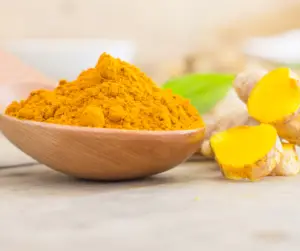
Turmeric, containing curcumin, exhibits analgesic, anti-inflammatory properties, and the potential to accelerate nerve regeneration, potentially reducing sciatic nerve pain.
Ingredients:
1 teaspoon of turmeric powder
1 tablespoon of sesame oil
Instructions:
Mix turmeric powder and sesame oil to form a thick paste.
Apply the paste to the affected area and gently massage.
Frequency: At least twice daily.
Vitamins

Vitamin supplements, particularly B12 and D, may aid in relieving lower back pain and reducing inflammation associated with sciatica.
Instructions:
Consult your doctor for recommended vitamin supplements and dosages.
Frequency: As advised by your doctor.
Alternatively, you can incorporate vitamin-rich foods like fruits, green leafy vegetables, pulses, and nuts into your diet for a natural source of essential nutrients.
Celery Juice

Celery extracts are rich in anti-inflammatory properties, which may help reduce pain intensity and inflammation associated with sciatica.
Ingredients:
250 mL of water
1 cup of chopped celery
Honey
Instructions:
Blend the chopped celery until you obtain a fine mixture.
Add honey for taste and consume the juice.
Frequency: Drink one cup of this juice twice daily.
Valerian Root

Valerian root is known for its anti-inflammatory and antispasmodic properties, which can help relax the muscles around the lower back by reducing inflammation.
Ingredients:
1 tablespoon of valerian root
1 cup of water
Instructions:
Boil water in a saucepan and add a tablespoon of valerian root.
Let it cool, and you can add a little honey for taste.
Sip on the tea.
Frequency: Consume this tea 2-3 times daily.
Fenugreek Seeds
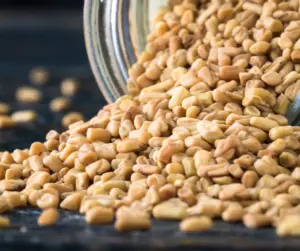
Fenugreek seeds possess analgesic, anti-inflammatory properties, and neuroprotective effects. These properties may aid in reducing sciatica pain.
Ingredients:
1 tablespoon of fenugreek powder
1 tablespoon of milk
Instructions:
Mix fenugreek powder and milk.
Apply the mixture to the affected area and wash it off with warm water after it dries.
Frequency: Repeat this 2 times daily.
Aloe Vera

Aloe vera juice contains acemannan, a polysaccharide with anti-inflammatory and neuroprotective properties, which may help reduce sciatic nerve pain.
Ingredients:
¼ glass of aloe vera juice
Instructions:
Consume aloe vera juice.
Optionally, apply aloe vera gel to the painful areas and massage gently.
Frequency: You can do this once daily.
Additional Methods to Manage Sciatica at Home
In addition to these herbal remedies, you can explore the following methods to alleviate the constant pain of sciatica:
- Engage in light workouts, yoga, and stretching exercises.
- Consider physical therapy and chiropractic care.
- Maintain proper posture to prevent straining your back.
- Explore over-the-counter pain relievers, consulting your doctor before use.
- Invest in weekly massage therapy or acupuncture sessions.
- Practice pain relaxation techniques, such as meditation.
- Avoid prolonged sitting and take regular walks.
If self-care techniques do not provide relief, consult your doctor for further evaluation.
When to See a Doctor

It’s crucial to recognize when it’s time to seek medical attention for sciatica. Here are some indicators that should prompt you to consult a healthcare professional:
Persistent Pain: If the pain persists for longer than a week despite trying home remedies and self-care measures, it’s time to see a doctor.
Unbearable Pain: If the pain becomes increasingly unbearable or disrupts your daily life, seeking medical help is essential for proper evaluation and management.
Sudden Lower Back Pain: If you experience sudden and severe lower back pain, especially after an injury or accident, consult a healthcare provider promptly.
Numbness in Legs: The presence of numbness, weakness, or loss of sensation in your legs or feet may indicate a more serious issue. Seek immediate medical assistance if you experience these symptoms along with sciatica pain.
FAQ’S
What organs can cause lower back pain?
Lower back pain can sometimes be linked to issues with organs like the kidneys, uterus, or ovaries. Kidney stones or infections, menstrual cramps, or ovarian cysts are some conditions that may cause lower back pain.
What is bad lower back pain a symptom of?
Intense or severe lower back pain could indicate various conditions, including muscle strain, herniated discs, spinal stenosis, arthritis, or issues with organs like the kidneys or reproductive system.
What are the red flags for low back pain?
Red flags in lower back pain include sudden onset after trauma, numbness or weakness in the legs, loss of bowel or bladder control, fever, unexplained weight loss, or pain that doesn’t improve with rest.
What disease starts with lower back pain?
Various conditions can start with lower back pain, including degenerative disc disease, osteoarthritis, sciatica, spinal stenosis, or fibromyalgia, among others.
How can I tell if my back pain is kidney-related?
Kidney-related back pain is often characterized by pain in the mid-to-lower back area, either side of the spine, and might be accompanied by other symptoms like fever, nausea, or urinary issues.
What causes lower back pain just above the buttocks?
Lower back pain just above the buttocks might be due to various issues, such as sacroiliac joint dysfunction, muscle strain, sciatica, or even spinal issues.
What is the fastest way to relieve sciatica pain at home?
Home remedies like applying ice or heat, gentle stretches, over-the-counter pain medications, and maintaining good posture can offer relief from sciatica pain.
How do I stop my sciatic nerve from hurting?
Avoiding prolonged sitting, maintaining proper posture, doing regular exercises that strengthen the back and core muscles, and applying hot or cold packs can help alleviate sciatic nerve pain.
How can I fix sciatica naturally?
Natural remedies for sciatica include regular exercise, yoga, stretching, applying hot or cold packs, maintaining good posture, and avoiding activities that aggravate the pain.
Can I cure my own sciatica?
While self-care measures can alleviate sciatica symptoms, it’s essential to consult a healthcare professional for a comprehensive treatment plan tailored to your condition.
Does walking help sciatica?
Walking and light aerobic exercises can often help relieve sciatica pain by releasing endorphins and promoting better circulation, but it’s essential to start slowly and not overexert.
What are the 4 stages of sciatica?
Sciatica typically progresses through four stages: irritation, inflammation, spasm, and then pain.
Can sciatica be so bad you can’t walk?
Severe cases of sciatica can cause such pain and discomfort that walking or even standing becomes challenging. In such instances, medical intervention may be necessary.
How can I tell if my pain is sciatica?
Sciatica pain often radiates from the lower back down through the buttocks and into one leg. It may be sharp, shooting, or burning and often follows the path of the sciatic nerve.
